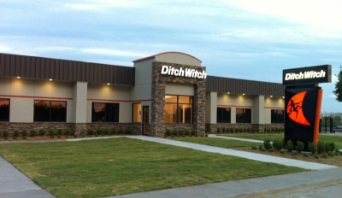By Susan Harmon, The Charles Machine Works, Inc. Product Safety & Compliance Manager
Featured in: Damage Prevention
As underground networks continue to grow, the risk of striking an underground utility line is ever more present. In 2016, below-surface utilities were damaged 317,869 times, according to the Common Ground Alliance DIRT report.
Utility strikes are avoidable. It’s imperative that horizontal directional drilling (HDD) contractors and operators follow best practices and procedures on the job to keep these numbers to a minimum. Crews should also keep in mind that damage from HDD equipment sometimes isn’t as immediately apparent as that caused by other ground-breaking equipment types.
Follow these best practices to help protect underground utilities and keep your people safe on the job.
Plan and Prepare #
A little time spent on planning and preparation can prevent problems that could take days, even weeks to fix. Take the time to prepare the crew and prepare the jobsite to identify existing utilities. Also, an advance emergency response plan can reduce chaos and uncertainty in the case of an underground utility strike. Part of this plan includes making sure traffic and pedestrians are directed away from the site during a safety event.
A successful job requires a knowledgeable, responsible and protected crew. A drill operator relies on the tracker on the ground using guidance equipment to provide feedback to successfully drill around obstructions. Whereas, the tracker relies on the operator to use the recommendations and keep him out of harm’s way.
Additionally, there is technology available today that helps operators plan bores prior to getting on the jobsite, and then monitor the bore progress from the operator seat while drilling. These advanced technologies together work to provide both the tracker and the operator with the same vital guidance equipment data.
For example, Subsite® Electronics, recently launched the Green Ops™ (GO) process. The process leverages a suite of software and electronic guidance technology to give a clear plan, more control, and faster reporting to facilitate safety and productivity.
The growing demand and advancements in the market also requires an adequate supply of knowledgeable HDD workers. Crews can prepare themselves through Ditch Witch® Certified HDD Training. This program incorporates key foundational elements that any HDD operator should know, with a strong focus on safety. It provides operators with training that fits their schedules and level of equipment knowledge.
As part of the program, operators can train with a HDD virtual reality simulator. This technology allows new operators to become familiar with the machine controls, while experienced operators can refine their skills to increase productivity. Practicing on an HDD simulator allows operators to learn in a controlled environment where mistakes aren’t risky.
Locate Existing Utilities #
Forty percent of damages that occurred across America in 2016 resulted from inadequate efforts to locate underground utilities or failure to notify the proper utility owners, according to the DIRT report. Fortunately, the underground construction industry has introduced valuable tools and services that, if used properly, can significantly reduce the risk of utility damage during HDD jobs.
1. Call 811 #
One-call (811) must be contacted to coordinate utility locations with companies that participate in the One-call program, in addition to contacting all utilities owners that do not participate in the program. Call in advance to allow time for the utility owners to properly mark their utilities. Prior to calling 811, operators should mark the proposed excavation plan with white paint, also known as “whitelining.” Whitelining helps the locator identify more precisely where the digging will occur.
2. Verify locates #
Some utility companies only locate to the utility meter, which may leave some privately-owned lines unmarked. If excavating around these lines, additional provisions must be made to locate them. Use a locator to identify these lines and to verify the utilities locates.
3. Use a vacuum excavator to expose lines #
Vacuum excavators not only improve material and fluid cleanup after drilling operations; these versatile machines can be used for soft excavation as well. While locating equipment is crucial for finding approximate locations of underground utilities, vacuum excavators can effectively expose utilities through potholing or daylighting. Providing a clear view of the utilities will allow the operators to visually verify the exact location and to watch bore crossings to ensure no damage occurs.
Track the Drill #
While drilling, the drill head must be tracked at least every full length of pipe, and more often depending on underground congestion in the area. Each tracking location should be marked and progress should be checked to ensure the bore is staying on the intended path. Even experienced operators have ended up somewhere they didn’t want to be when not keeping frequent track of the drill head location.
Any utility strike has the potential to affect thousands, with potentially fatal consequences and expensive penalties. By understanding and applying these best practices, operators and crews can significantly reduce the risks associated with HDD jobs.
For more information about keeping safe on the job, please visit https://www.ditchwitch.com/safety.






